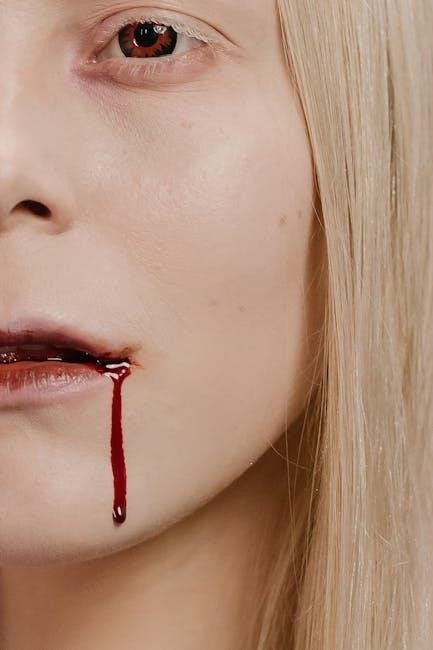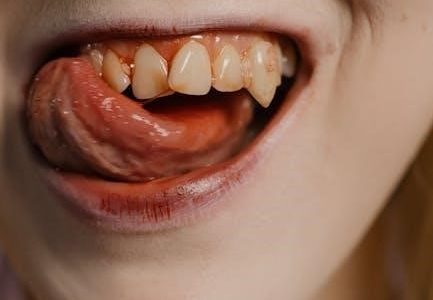The Blood Death Knight is a formidable tank specialization in Cataclysm Classic, emphasizing self-sustain, high survivability, and versatile defensive tools, making them a top-tier tank choice for skilled players.
Overview of the Blood Specialization
Blood Death Knights are World of Warcraft’s premier self-sustain tanks, excelling at absorbing damage and maintaining threat through powerful defensive tools. This specialization focuses on manipulating blood and darkness to heal and protect, making them highly resilient. With abilities like Death Strike and Blood Shield, they sustain themselves while dealing consistent damage. The introduction of Outbreak in Cataclysm simplifies disease management, freeing up resources for other critical functions. Blood Death Knights are versatile and excel in both PvE and PvP, though they shine brightest as tanks in raid and dungeon content.
Why Play a Blood Death Knight in Cataclysm Classic?
Blood Death Knights offer a unique blend of self-sustain, high survivability, and versatile defensive tools, making them a top-tier tank choice. They excel in challenging content due to their ability to heal through Death Strike and absorb damage with Blood Shield. The specialization’s high skill ceiling and robust cooldowns provide players with a sense of mastery. Additionally, Blood Death Knights bring utility to raids, such as the Abomination’s Might buff, enhancing their group’s effectiveness. For those seeking a dynamic and rewarding tanking experience, Blood Death Knights are an excellent choice in Cataclysm Classic.
Class Mechanics for Blood Death Knights
Blood Death Knights rely on Vampiric Blood, Blood Shield, and Death Strike to manage survivability, absorbing damage and self-healing through rune and runic power systems.
Understanding Vampiric Blood and Blood Shield
Vampiric Blood and Blood Shield are core defensive mechanics for Blood Death Knights. Vampiric Blood increases maximum health and healing received, enhancing survivability, while Blood Shield converts excess healing into an absorption barrier. This barrier scales with healing received, providing an additional layer of protection. Blood Shield is fueled by Death Strike, making consistent healing crucial for maintaining the shield. Together, these abilities create a robust defensive system, allowing Blood Death Knights to withstand significant damage and recover efficiently in combat situations.
Death Strike and Its Importance
Death Strike is a cornerstone ability for Blood Death Knights, serving both offensive and defensive purposes. It deals damage to enemies and heals the Death Knight, while also generating a Blood Shield. This shield absorbs damage based on the healing received, enhancing survivability. Death Strike is crucial for maintaining threat generation and is often used to sustain through heavy damage phases. Its importance lies in its dual functionality, making it a key part of the Blood Death Knight’s rotation and defensive strategy in both single-target and multi-target encounters.
Rune System and Runic Power Management
Blood Death Knights rely on a rune system consisting of Blood, Frost, and Unholy runes, which are used to fuel their abilities. Each ability consumes specific runes, which regenerate over time. Runic Power, a secondary resource, is generated when runes are spent and is used for powerful abilities like Death Strike. Effective management involves balancing rune usage to maintain consistent damage output and healing. Blood Tap can be used to generate free runes, aiding in maintaining a smooth rotation and ensuring resource efficiency during intense combat situations.
Blood Death Knight Rotation and Priority List
The Blood Death Knight rotation focuses on managing runes and diseases while prioritizing healing and threat generation. Use Outbreak to apply diseases, Death Strike for healing, and Heart Strike for AoE.
Single-Target Rotation
The single-target rotation for a Blood Death Knight focuses on maintaining diseases and maximizing healing through Death Strike. Begin with Outbreak to apply both Frost Fever and Blood Plague. Use Plague Strike to refresh Blood Plague and Icy Touch for Frost Fever when Outbreak is on cooldown. Prioritize Death Strike to heal and generate Blood Shield, especially during high damage intake. Use Heart Strike to consume Blood Shield for additional damage. Maintain Blood Boil for AoE threat and Blood Tap to generate extra runes for Death Strike. Keep diseases active and manage runes efficiently to maintain threat and survivability.
AOE Rotation
For AOE situations, Blood Death Knights rely on Blood Boil as their primary attack to damage and generate threat on multiple targets. Start by using Outbreak to apply diseases to all enemies, ensuring both Frost Fever and Blood Plague are active. Use Blood Boil to maintain consistent AOE damage and threat, while also refreshing diseases on nearby targets. When Outbreak is on cooldown, use Plague Strike and Icy Touch to maintain diseases on individual targets. Incorporate Death Strike to heal and generate Blood Shield, especially during heavy AOE damage phases. Utilize Blood Tap to generate extra runes, allowing for more frequent Death Strikes and maintaining AOE effectiveness. This rotation ensures sustained threat generation, disease management, and self-healing in multi-target encounters.
Using Outbreak for Disease Management
Outbreak is a crucial ability for Blood Death Knights, simplifying disease management by applying both Frost Fever and Blood Plague to a target in one cast. This is particularly useful for initiating combat or refreshing diseases on multiple enemies. When Outbreak is on cooldown, use Plague Strike and Icy Touch to maintain Blood Plague and Frost Fever, respectively. Prioritize using Outbreak during AOE situations or when diseases are about to expire, ensuring consistent damage and threat generation. This ability is a cornerstone of efficient disease management in both single-target and multi-target scenarios.
Talent Builds for Blood Death Knights
Talent builds for Blood Death Knights focus on maximizing survivability and threat generation while enhancing core abilities like Death Strike and Vampiric Blood. The guide covers PvE and AOE-specific builds.
PvE Tanking Talent Build
The PvE tanking talent build for Blood Death Knights in Cataclysm Classic focuses on maximizing survivability and enhancing defensive capabilities. Key talents include Vampiric Blood, Bone Shield, and Rune Tap, which bolster self-healing and damage absorption. Points are also allocated to improve Death Strike efficiency and threat generation. Secondary stats like Strength, Stamina, and Mastery are prioritized to further enhance tanking performance. This build ensures optimal self-sustain and durability, making Blood Death Knights highly effective in raid and dungeon environments.
AOE Tanking Talent Build
The AOE tanking talent build for Blood Death Knights in Cataclysm Classic emphasizes multi-target threat generation and survivability. Key talents include Blood Boil and Crimson Scourge to enhance AOE damage and disease spread. Points are also invested in Improved Icy Touch and Outbreak to maintain consistent AOE threat. This build ensures efficient management of multiple enemies while maintaining defensive capabilities, making it ideal for high-mobility and dynamic encounters where AOE control is crucial.

Glyphs for Blood Death Knights
Glyphs enhance the Blood Death Knight’s utility and survivability. Glyph of Bone Shield and Glyph of Dancing Rune Weapon are essential, while the third slot is situational, improving overall performance.
Major Glyphs
Glyph of Bone Shield is a must-have, as it increases movement speed by 10%, enhancing mobility. Glyph of Dancing Rune Weapon provides a 10% chance to generate additional runic power, improving resource management. These glyphs are essential for optimizing both survivability and performance, making them mandatory for any Blood Death Knight aiming to maximize their effectiveness in PvE content.
Minor Glyphs
Minor glyphs offer utility and convenience without impacting core functionality. Glyph of Path of Frost reduces damage taken while swimming, while Glyph of Blood Tap provides a 20% chance to generate a Blood Rune. Glyph of Horn of Winter reduces the cooldown of Horn of Winter by 30 seconds. These glyphs enhance quality of life, allowing for better mobility and situational utility, making them ideal for personal preference without compromising performance.
Stat Priorities and Gear Optimization
Stamina and mastery are top priorities for Blood Death Knights, as they enhance survivability and Blood Shield. Hit and expertise ensure consistent threat generation, while crit and haste improve Death Strike effectiveness.
Reforging and Gemming
When reforging, prioritize converting excess hit and crit into mastery or dodge. For gemming, use Stam gems in blue sockets and Stam/Mastery in yellow sockets to maximize survivability. Meta gems like Ebon Veil are ideal for tanking, as they provide increased magic resistance and improved armor; Always ensure sockets match your gear’s requirements to avoid penalties. These optimizations enhance your Blood Shield and overall defensive capabilities, making you a more resilient tank for your raid or dungeon team.
Enchants and Consumables
Enchants and consumables are crucial for optimizing your Blood Death Knight’s performance. Enchant your chest with Stamina and head with Arkansaw or Blue armor. Weapon enchants like Mastery or Parry enhance your defensive capabilities. For consumables, use Flask of Steelskin for stamina or Elixir of Superior Defense for armor. Pre-pot with Guardian Elixir and Fish Feast for a stamina and mastery boost. These enhancements will ensure you maintain peak survivability and threat generation in raids and dungeons.

Races and Professions for Blood Death Knights
Tauren and Troll are top picks for Horde, while Dwarf and Night Elf excel for Alliance. Professions like Blacksmithing, Enchanting, and Jewelcrafting provide valuable stat boosts for tanking.
Best Races for Blood Death Knights
The optimal races for Blood Death Knights vary by faction. For Horde, Tauren excel due to Endurance, increasing stamina, while Trolls benefit from Berserking and Regeneration. Orcs are viable with Blood Fury for attack power boosts. On Alliance, Dwarves shine with Stoneform for defense and Frost Resistance. Night Elves are strong with Quickness and Nature Resistance. Humans offer Every Man for Himself for immunity to movement impairing effects. These racial traits enhance survivability and utility, making certain races more advantageous for tanking in Cataclysm Classic.
Professions for Optimal Performance
For Blood Death Knights, certain professions enhance performance. Blacksmithing and Enchanting are optimal, as they provide additional gem sockets and powerful enchants. Jewelcrafting offers superior gems, while Mining boosts stamina for survivability. Engineering provides utility items like shields or belts. Herbalism or Alchemy can be useful for consumables but are less impactful. Tailoring or Leatherworking are viable but lack direct tanking benefits. These professions complement the Death Knight’s defensive and offensive capabilities, ensuring peak performance in raids and dungeons.

Defensive Cooldowns and Utility
Blood Death Knights possess powerful defensive tools like Vampiric Blood, Icebound Fortitude, and Anti-Magic Shell, enhancing survivability and providing versatile utility in challenging encounters, making them highly resilient tanks.
Anti-Magic Shell and Icebound Fortitude
Anti-Magic Shell absorbs magical damage and reduces its cooldown by 20 seconds with the right talent, while Icebound Fortitude provides a significant reduction in damage taken, enhancing survivability in magic-heavy encounters and allowing Death Knights to better manage incoming damage, making these abilities crucial for maintaining defensive stability in various raid and dungeon scenarios.
Will of the Necropolis and Vampiric Blood
Will of the Necropolis prevents fatal damage by healing the Death Knight if their health drops below 35%, ensuring survival in critical moments. Vampiric Blood enhances healing received and increases Blood Shield absorption, making it a powerful defensive cooldown. These abilities synergize to provide unparalleled survivability, allowing Blood Death Knights to withstand intense damage and recover from dangerous situations effectively during raids and dungeons.
Threat Generation and Aggro Management
Blood Death Knights excel at generating and maintaining threat through abilities like Death Strike and Blood Boil. Proper use of taunts and cooldowns ensures consistent aggro control in raids and dungeons.
Tips for Maintaining Threat
- Use Death Strike as your primary attack to generate consistent threat while healing.
- Apply diseases with Outbreak or Plague Strike to maintain passive threat generation.
- Utilize Blood Boil for AoE situations to build threat on multiple targets.
- Don’t forget to taunt off targets when necessary to prevent aggro loss.
- Manage your runes effectively to ensure consistent ability usage;
- Use cooldowns like Mind Freeze to interrupt and maintain focus on high-threat targets.
Using Taunts and Cooldowns
Taunts and cooldowns are crucial for Blood Death Knights to manage aggro and survive intense encounters. Use Dark Command to force enemies to attack you, ensuring threat stays high. Employ Vampiric Blood to boost health and healing, while Anti-Magic Shell absorbs magical damage. Icebound Fortitude provides a reliable damage reduction cooldown. Timing these abilities perfectly can prevent wipes and maintain tank control. Mastering cooldowns enhances survivability and makes you a formidable tank in any raid or dungeon setting.

Advanced Tips for Blood Death Knights
Master cooldown management, prioritize Runic Power optimization, and maintain precise disease control. Positioning and movement are key to maximizing survivability and damage output in high-pressure situations.
Cooldown Management
Effective cooldown management is crucial for Blood Death Knights. Vampiric Blood and Icebound Fortitude should be used preemptively during high-damage phases. Anti-Magic Shell is ideal for absorbing magical damage, while Will of the Necropolis provides a safety net against lethal blows. Timing these abilities with healers’ cooldowns enhances survivability. Additionally, using Bone Shield during downtime can mitigate unnecessary damage. Proper rotation of these tools ensures optimal performance in both raids and dungeons, making Blood DKs highly resilient and adaptable tanks.
Positioning and Movement
Positioning and movement are critical for Blood Death Knights to maximize effectiveness. Always face enemies away from the group to prevent cleave damage. Use Death Grip to control adds and maintain distance. Kite mobs when necessary to avoid excessive damage. Utilize Dark Command to reposition enemies strategically. Keep an eye on environmental hazards and move promptly to avoid them. Effective movement ensures uninterrupted DPS and survivability, especially during boss mechanics. Practice positioning to master spatial awareness and enhance overall performance in raids and dungeons.
Blood Death Knight in PvE vs. PvP
Blood Death Knights excel in PvE with exceptional self-sustain and tanking capabilities. In PvP, their effectiveness is diminished due to balancing issues compared to other classes.
PvE Effectiveness
Blood Death Knights are highly effective in PvE, offering unmatched resilience and self-healing through abilities like Death Strike and Blood Shield. Their simplified rotation with Outbreak ensures consistent disease application, enhancing survivability. With strong threat generation and versatile defensive cooldowns, they excel in both single-target and AoE scenarios, making them a valuable asset to any raid or dungeon team. Their ability to out-heal damage taken adds another layer of reliability, solidifying their role as a top-tier tank in Cataclysm Classic.
PvP Viability
While Blood Death Knights excel in PvE, their effectiveness in PvP is notably diminished. They lack mobility and burst damage compared to other classes, making them less competitive in arenas and battlegrounds. However, their defensive toolkit, including Anti-Magic Shell and Vampiric Blood, provides strong survivability. Blood DKs can still hold their own in PvP with proper play, but they are not considered a top-tier choice for competitive play. Their strength lies in self-sustain rather than dealing decisive damage, making them more suited for PvE content.
The Blood Death Knight remains a formidable tank in Cataclysm Classic, offering unmatched self-sustain and resilience. With proper mastery and the right resources, they excel in challenging content.
Final Thoughts on Playing Blood Death Knight
Playing a Blood Death Knight in Cataclysm Classic is a rewarding experience, offering a unique blend of self-sustain and defensive utility. With proper mastery, the spec shines as a resilient tank capable of handling demanding content. The satisfaction of managing cooldowns and outlasting enemies makes it a fulfilling choice for skilled players. For those who enjoy a high skill ceiling and the ability to out-heal damage, Blood DK is a standout option, providing a sense of mastery and reliability in any raid or dungeon setting.
Resources for Further Learning
For further mastery of the Blood Death Knight, explore guides on Warcraft Tavern and Icy Veins, which offer detailed strategies and class-specific advice. Utilize tools like Ask Mr. Robot for gear optimization and WoWHead for comprehensive databases and addons. Additionally, YouTube channels and Twitch streams from experienced players provide valuable insights and live gameplay examples to enhance your skills;

